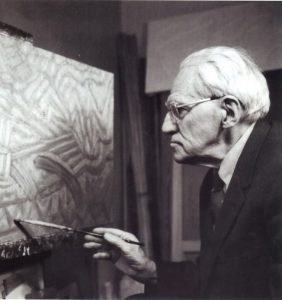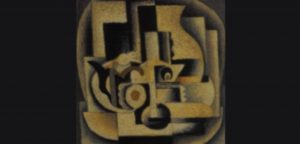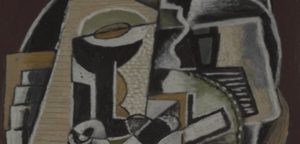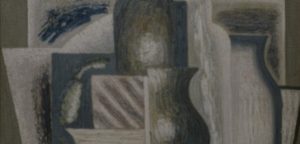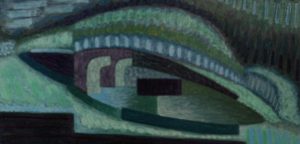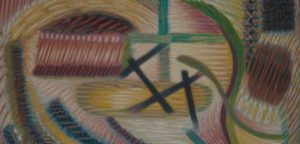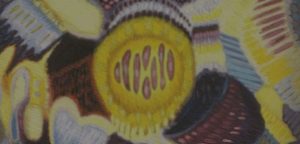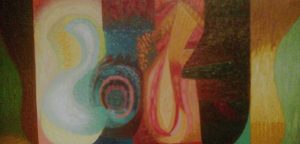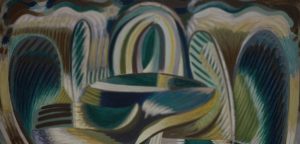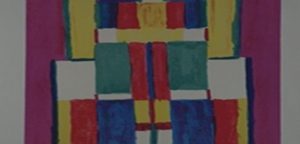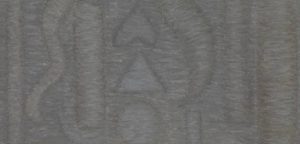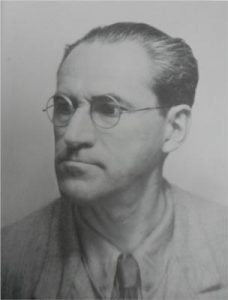He was born on August 16, 1888 in Buguruslan, Samara province of the Russian Empire (now the Orenburg region).
1888 - 1975
Serge Charchoune
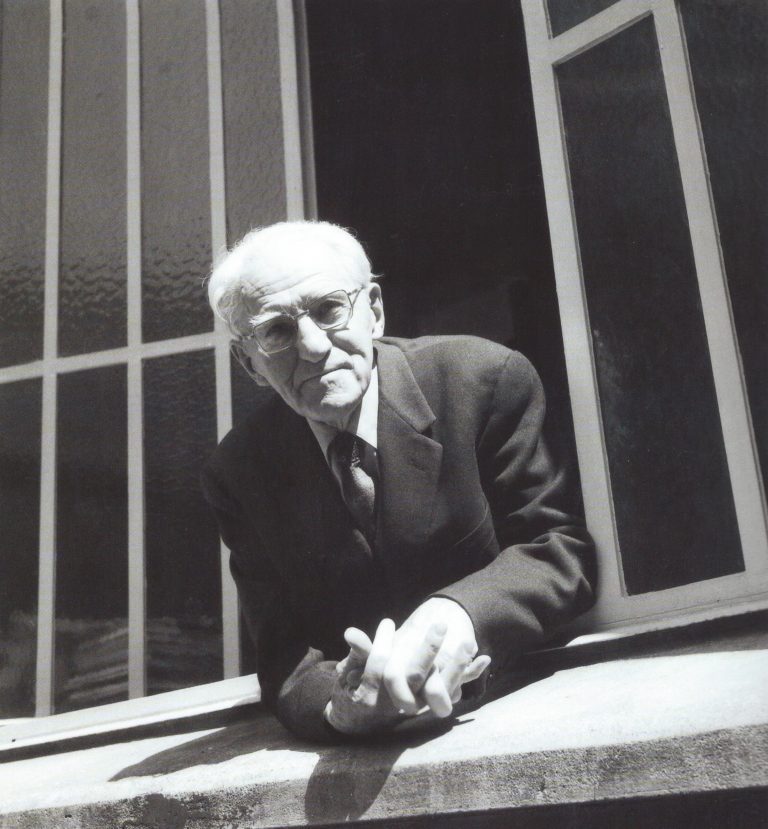
description
A Russian avant-garde artist, writer, who lived and worked mainly in Paris.
The artist was born into the large family of a merchant, far from art.
He was a member of the group of Dadaists and participated in their exhibitions in Paris and Berlin. The importance of his art was confirmed by masters Pablo Picasso and Marcel Duchamp, as well as the retrospective exhibition held at the Museum of Modern Art of Paris (1971). The artist wrote and published his own magazine “Perevoz-dada”, which was published intermittently and with different names from 1922 to 1973 and is a valuable source of information for art historians.
Consistently passing the stage of adherence to Cubism, Purism, Orphism, Dadaism, Sharshun formed his own style. At the same time, he did not forget the experiments and finds of the past. Modernizing different techniques and ideas in its own way, combining them, he became recognizable and respected.
Key Ideas:
– Since adolescence, the merchant’s son from the Volga town, who strove for an excellent life, tried to realize almost all the avant-garde currents that existed in the 20th century. His first landscapes (they are only a few) are lyrical, the first still-lives are bright, “Cezanne-like”, the first compositions are close to the French rationalist Cubism. A part of the works are painted in the style of purism, and the others are created in the style of orphism. G. Adamovich explained such searches as “a manic desire to explain himself, and at the same time everything that surrounds him.”
– S. Charchoune was fond of many philosophies and applied them in the visual arts. Completed in the 1920s, two series of Dadaistic portraits reflect the Pythagorean and Platonic logic. In this case, the artist demonstrates the possibility of using the “geometry and intuition” to identify the relationship of a human being with the whole universe, and not only with nature. In the same style, the late “Self-portrait No. 2”, which indicates that the author returned to his ideas constantly, without rejecting anything for good, was created. The internal connection of the parts of the composition is maintained in both early and subsequent works by geometric forms, when a rectangle is a symbol of order, a circle is an indicator of perfection, etc. Looking for harmonious combinations characterizing being, the artist unites ornament (it is the bearer of the most universal, elementary, although deep content) with constructions that “work” on intellectual tasks. This how the Dadaist expresses the Platonic-Christian world outlook of Vl. Solovyov.
– In addition to the favorite current water plot, Serge Charchoune was an adept of the theosophical doctrine of Madame Blavatska, was obsessed with translating the absolute language of music into the language of painting and graphics. He devotes abstract compositions to the themes of Beethoven and Stravinsky’s Symphonies of Psalms, Schubert’s 9th Symphony and Brahms’s Waltz for Violin. In the same years (1950-1960-s), he refers to the image of the movement with music. Charchoune’s images of the dance, so popular with the Dadaists, embody the idea of peace, which inevitably arises after and destruction (Plisetskaya, Vyrubova (both-1966). It was so, even though the artist quit Dadaism before 1930.
1888
1905 - 1909
1910 - 1912
1913 - 1914
1916 - 1919
1920 - 1922
1922 - 1923
1924 - 1929
1930
1940
1971
1875
The birth of the artist
Entered Kazan Art College
Entered Kazan Art College. After graduating from there, he went to Moscow to prepare to enter the School of painting, immersed in the whirlpool of creative life. One of the colorful “cezannists” was Ilya Mashkov, under whose leadership Sergey began to work. He met R. Falk and P. Konchalovsky, A. Kruchenykh, A. Lentulov. Shchukin’s mansion, open to visitors, helped the volzhanin to get acquainted with the works of French artists, from the Impressionists to P. Picasso. At the request of his father, he was forced to return to the district town and stand behind the counter.
He was drafted into the army
He was drafted into the army. At the end of the two-year serving in the military service, he deserted, through Poland and Germany reached Paris. Immediately began to realize his dream – to paint seriously. Visited the Russian academy of M. Vasiliev, the Academy of Cubists “La Palette”, where his teachers were A. Le Fauconnier, D. de Segonzac, J. Metzenje. He tirelessly got acquainted with things offered by private galleries and exhibitions, museums, rich collections of art collectors.
"Elastic Compositions»
Demonstrated his first Cubist experiments – “Elastic Compositions» – at the Salon of the Independent. Following the advice of his mentor Le Fauconnier, he went to Brittany, the special charm of which inspired many creators. There the artist got acquainted with sculptor Helen Grünhof, a student of A. Bourdelle and A. Arkhipenko, with whom he lived in a civil marriage for ten years. With the outbreak of World War I, he and Helen left for Barcelona. He began to develop his own version of the technique of painting, which he called “ornamental Cubism.”
Spent solo exhibitions in Spain
Spent solo exhibitions in Spain, created two colored drawing films. Returning to Paris, he met with a group of artists – F. Picabia and J. Arp, M. Duchamp and M. Ernst, as well as poet T. Tzara, who attracted the Russian artist by their ideas – Serge entered the notorious Dada group, became a regular visitor of their noisy meetings and debates.
Became a frequent visitor of the cafe of the Dadaists "La Certa"
Became a frequent visitor of the cafe of the Dadaists “La Certa” and “Sundays” of his friend F. Picabia; participated in the Salon of Independent, in the collective Salon Dada at the gallery “Montaigne” and in the exhibition of Russian art at the London gallery Whitechapel. Wrote and illustrated the Dadaist poem “Foule immobile”. In the cafe “Caméléon”, there was a ceremony in his honor. He became a member of the creative circle “Gatarapak”, the group “Through” (organized by poet Ilya Zdanevich) and the French Union of Russian Artists.
Came to Berlin
Came to Berlin. Held an exhibition at the gallery Der Sturm (together with Polish artist Helen Grunhoff). He created Berlin abstractions in his style “Ornamental Cubism”, collaborated with the magazines of the Dadaists, wrote the brochure “Dadaism”, began to publish his own magazine in Russian “Transport of Dada” (leaflets were published until 1973). Participated in the party, arranged by V. Mayakovsky in honor of Isadora Duncan (Serge knew her thanks to the dadaistic action in Paris “Cacodilator’s Eye”, arranged by their common friend F. Picabia).
Broke up with E. Grünhoff
Broke up with E. Grünhoff and returned to Paris. He held solo exhibitions in Paris galleries, participated in collective expositions of Russian artists, except Paris, in Amsterdam and Strasbourg, Barcelona and Stockholm, Brussels and New York. Gradually departed from Dadaism, was fond of anthroposophy.
There was a crisis in his work
There was a crisis in his work, in many respects related to economic problems. Little doing painting (he painted small semi-abstract landscapes and still lifes for sale), he developed literary activities, collaborated with the magazine “Numbers”, visited the literary evenings of the “Green lamp” of Merezhkovsky, the Salon “Sloboda” of Slonim. For decades, at the galleries of Paris, there were only 2 exhibitions – in 1930 and 1939.
The beginning of a fruitful and quiet period in creativity
The beginning of a fruitful and quiet period in creativity. Having concluded a contract with Paris art dealer R. Creuse, he did not worry about exhibiting and selling paintings. Held many solo exhibitions in the following decades – in Europe, the USA, Canada, participated in collective exhibitions. Illustrated and decorated books.
Retrospective at the National Museum of Modern Art in Paris
Retrospective at the National Museum of Modern Art in Paris (The Center of G. Pompidou) became the culmination of the artist’s career – it made him recognized; his paintings were actively acquired by collectors and museums. He bequeathed 31 his works to the Tretyakov Gallery. Two years later, he went on a tour to the Galapagos Islands.
The death of the artist
Serge Charchoune died on November 24, 1975 in Villeneuve-Saint-Georges near Paris, the province of Val de Marne.
Serge Charchoune
On Artist
flow
Cubism
Purism
friends
Man Ray
Francis Picabia
Mikhail Larionov
Natalia Goncharova
Alexey Kruchenykh
Robert Falk
Petr Konchalovsky
Aristarkh Lentulov
Helen Grunhof
Marcel Duchamp
Max Ernst
artists
Amed Ozanfan
Henri Le Foconier
Andre Breton
Jean Arp
Ilya Mashkov
Konstantin Yuon
Jean Metzinger
Andre Dunaye de Segonzac
Mikhail Vasilyev
By Artist
flow
Abstractionism
friends
Man Ray
Francis Picabia

